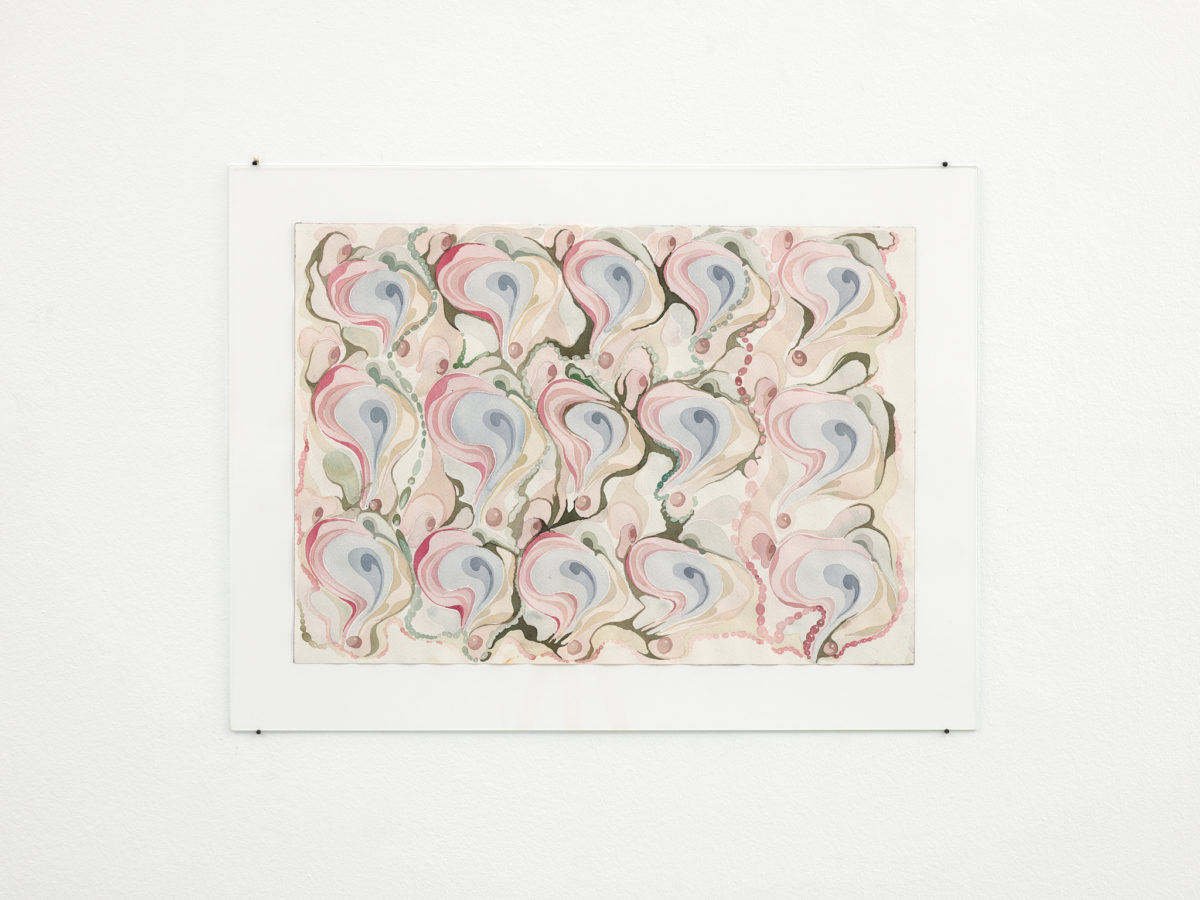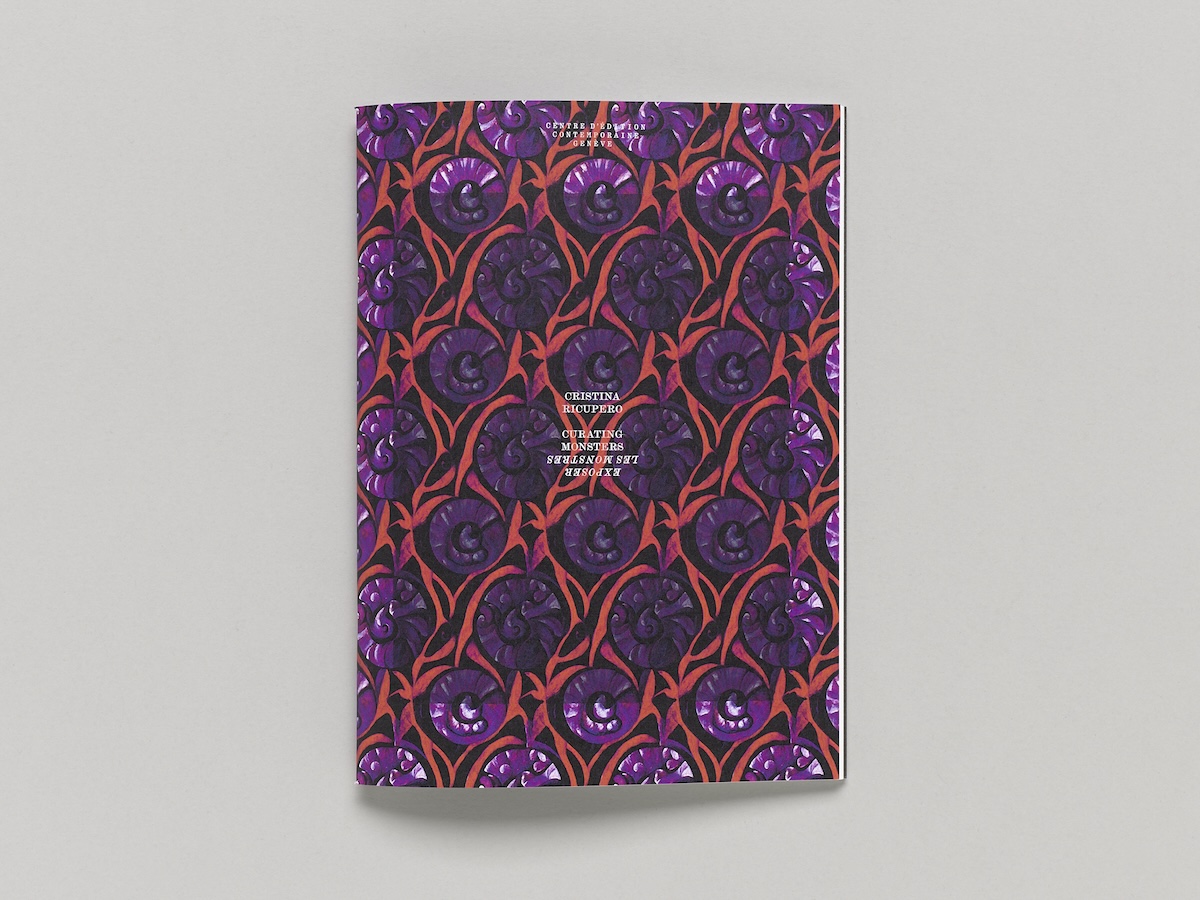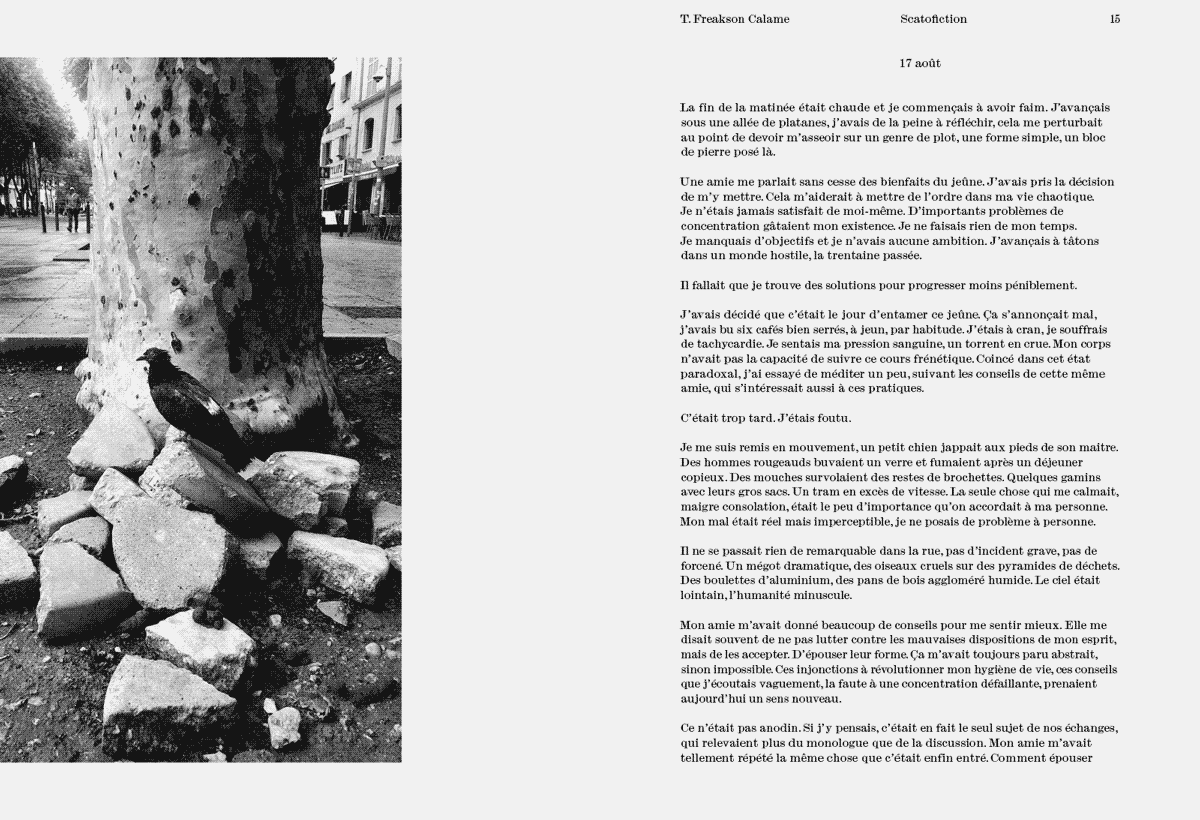Exhibition
Timothée Calame
Gymnique Incontinentale
Opening, Wednesday, June 11, 2025, from 6 pm to 8 pm
Exhibition from June 12 to July 18, 2025

NEW PUBLICATIONS
Cristina Ricupero
Curating Monsters, Before publication 12
Cristina Ricupero, Curating Monsters, Before publication 12, brochure, 48 pages – single booklet, 17,2 × 23,5 cm, offset, stapled binding, 250 copies – published in the Before publication collection, which gathers the pre-publications of authors’ texts or artists’ inserts, which will appear regularly and as a preview before the final publication, L’Effet papillon II (second volume of L’Effet papillon, 1989 – 2007, catalogue of the Centre d’édition contemporaine published in 2008). Graphic design: Niels Wehrspann, Lausanne. Edition of the Centre d’édition contemporaine, Geneva, 2025. ISBN: 978-2-9701916-0-5

In Curating Monsters, Before publication 12, Cristina Ricupero uses the figure of Frankenstein as a common thread to explore and share her curatorial practice. Finding a link between Mary Shelley’s composite monster and the creative principle of an exhibition, where often a very large and diverse corpus of works multiplies occurrences, which combine, respond to each other and generate a reflection capable of broadening perspectives and critical commentaries. The themes chosen are often topical or even intuitive, which attests to her singularity as a curator.
Through an analysis of four historic and emblematic exhibitions – the First International Dada Fair, International Surrealist Exhibition, First Papers of Surrealism and the Surrealist gallery at Peggy Guggenheim’s gallery Art of This Century– produced between 1920 and 1942, Cristina Ricupero revisits some of her projects and highlights her favorite themes: secret societies (Secret Societies, Schirn Kunsthalle, Frankfurt and CAPC Bordeaux, 2011–2012), the links between art and crime (The Crime Was Almost Perfect, Witte de With Center for Contemporary Art, Rotterdam et PAC-Padiglione d’Arte Contemporanea, Milan, 2014) the world of espionage (We Never Sleep, Schirn Kunsthalle, Frankfurt, 2020–2021) and enthusiastic awkwardness in art in the exhibition Ridiculously Yours? ! Art, Awkwardness and Enthusiasm (Bundeskunsthalle Bonn, Deichtorhallen / Falckenberg Collection, Hamburg; the Halle für Kunst Steiermark, Graz; Neue Galerie Graz Halle für Kunst Steiermark, Graz, 2022–2024). Not to mention that this recurring underlying idea of monstrosity enables her to envisage the exhibition as a body in mutation, where each element organically participates in the construction of a coherent whole, which Cristina Ricupero sees above all as a space for critical questioning of art and society.
Cristina Ricupero is an independent curator and an art critic. She lives and works in Paris. Her international exhibitions include: Ridiculously Yours?! Art, Awkwardness and Enthusiasm (with Jörg Heiser), Halle für Kunst Steiermark, Graz (2023), Deichtorhallen/Sammlung Falckenberg, Hamburg (2023) and Bundeskunsthalle, Bonn (2022); We Never Sleep, Schirn Kunsthalle, Frankfurt (2020); Divided We Stand (avec Jörg Heiser), 9th Biennal of Busan (2018); Nuit Blanche, Monaco (2016). She was a consultant for the 9th Seoul Mediacity Biennale (2016); The Crime Was Almost Perfect, Witte de With, Rotterdam (2014) and PAC-Milan, Milan (2014); New Ways of Doing Nothing (with Vanessa Joan Müller), Kunsthalle Vienna (2014); Suspicious Minds, Galeria Vermelho, São Paulo (2013); Cosmic Laughter – Timewave zero then what? (with Fabian Marti), Ursula Blickle Stiftung (2012), Kraichtal-Unteröwisheim (2012); Secret Societies, Schirn Kunsthalle, Francfort and CAPC de Bordeaux (2011).
T. Freakson Calame
SCATOFICTION, Before publication 13
T. Freakson Calame, SCATOFICTION, Before publication 13, brochure, black/white, colour, 32 pages, – single booklet, 17,2 × 23,5 cm, offset, stapled binding, 250 copies – published in the Before publication collection, which gathers the pre-publications of authors’ texts or artists’ inserts, which will appear regularly and as a preview before the final publication, L’Effet papillon II (second volume of L’Effet papillon, 1989 – 2007, catalogue of the Centre d’édition contemporaine published in 2008). Graphic design: Niels Wehrspann, Lausanne. Edition of the Centre d’édition contemporaine, Geneva, 2025. ISBN: 978-2-9701916-3-6

The thirteenth Before publication is a fictional text by Geneva based artist Timothée Calame aka T. Freakson Calame, exhibited at the Centre d’édition contemporaine in 2019. It is a collection of short stories that follow the urban wanderings of a protagonist through a series of unlikely events and encounters. In a stifling, paranoid atmosphere, each of the settings is the site of a threat to the main character, who drags along an existential malaise, coming up against the constraints dictated by absurd social conventions, as well as the floating, off-the-ground individuals who stand sentinel.
This text retraces Calame’s interests: the city and its nooks and crannies, urban planning and its underlying political stakes, the cultural industry and its accesses. By describing an environment that is both coercive and deliquescent, it questions the influence of these public spaces on our behaviour in society, regulated by underlying codes and rules that constitute a surveillance system. SCATOFICTION conveys a sense of dereliction, a generalized state of economic and cultural precariousness, the effect of a power that favours individualism over the creation of a mutualistic, communitarian society, leaving each individual to his or her own solitude.